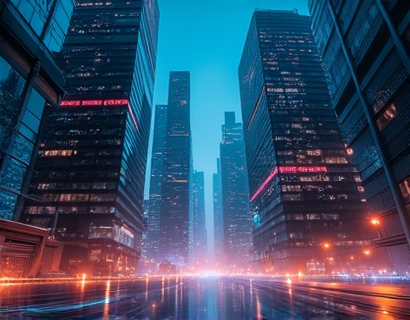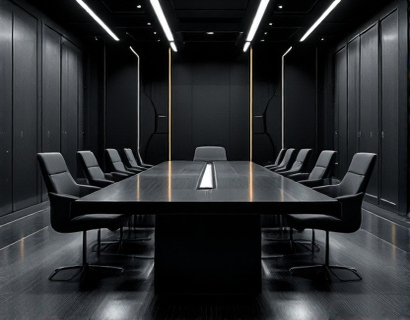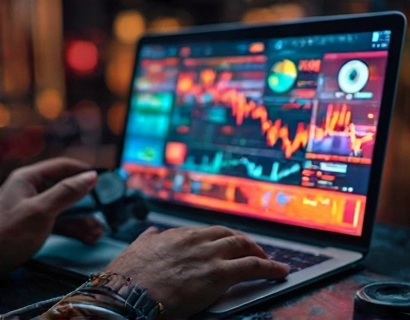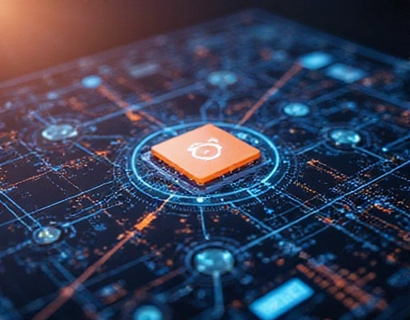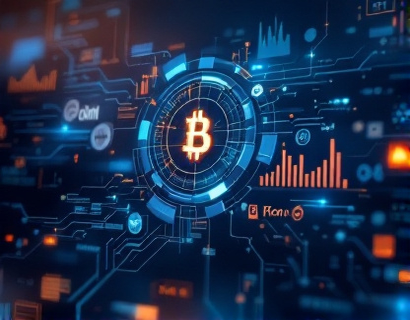Revolutionizing Digital Asset Management: The Power of Decentralized dApps for Cross-Blockchain Conversion
The landscape of blockchain technology is rapidly evolving, presenting both opportunities and challenges for professionals and enthusiasts alike. One of the most significant hurdles in the adoption and utility of blockchain solutions is the interoperability between different blockchains. Traditional methods of converting digital assets from one blockchain to another often involve complex processes, high transaction fees, and potential security risks. However, a groundbreaking decentralized application (dApp) is changing the game by streamlining cross-blockchain digital asset conversion, offering unparalleled compatibility and efficiency. This article delves into the intricacies of this innovative solution, designed specifically for blockchain professionals and digital asset managers seeking cutting-edge solutions.
Understanding the Need for Cross-Blockchain Asset Conversion
The diversity of blockchains, each with its unique features and protocols, has led to a fragmented ecosystem where digital assets are often confined to specific platforms. This fragmentation poses significant challenges for users who wish to leverage the benefits of multiple blockchains. For instance, an asset optimized for Ethereum's smart contract capabilities may not function seamlessly on a blockchain designed for high-speed transactions like Binance Smart Chain. The need for a seamless and efficient method to convert and transfer digital assets across these boundaries is evident. This is where the power of decentralized dApps comes into play, offering a robust and user-friendly solution to this complex problem.
Introducing the Decentralized Solution
The dApp in focus is a pioneering platform that leverages the principles of decentralization to facilitate seamless cross-blockchain asset conversion. By eliminating the need for intermediaries, this solution not only reduces transaction costs but also enhances security and privacy. The architecture of this dApp is built on a modular design, allowing for continuous updates and improvements without disrupting the core functionality. This ensures that the platform remains at the forefront of technological advancements in the blockchain space.
Key Features of the Decentralized Asset Conversion dApp
- Cross-Chain Compatibility: The dApp supports a wide range of blockchains, including but not limited to Ethereum, Binance Smart Chain, Polkadot, and Solana. This broad compatibility ensures that users can convert assets between virtually any blockchain, making it an indispensable tool for digital asset managers.
- User-Friendly Interface: Despite its complex underlying technology, the dApp boasts an intuitive and straightforward interface. Users can easily navigate through the conversion process, with clear instructions and real-time feedback to ensure a smooth experience.
- Enhanced Security: Security is paramount in the world of blockchain. This dApp employs state-of-the-art cryptographic techniques and decentralized consensus mechanisms to protect user assets during the conversion process. Transactions are verified by multiple nodes, minimizing the risk of fraud and hacking.
- Cost Efficiency: By removing intermediaries, the dApp significantly reduces transaction fees associated with traditional cross-blockchain conversions. Users can save substantially on costs while enjoying the same level of service and reliability.
- Real-Time Tracking: Users can monitor the status of their asset conversions in real-time. This transparency builds trust and allows users to take immediate action if any issues arise during the process.
How the Decentralized dApp Works
The operation of this decentralized dApp can be broken down into several key steps, each designed to ensure a seamless and secure conversion process.
First, the user initiates the conversion by selecting the source and target blockchains from the dApp's interface. The platform then generates a unique transaction request, which is broadcast to the relevant blockchain networks. These networks validate the request using their native consensus mechanisms, ensuring that the transaction is legitimate and secure.
Once validated, the asset is locked in a smart contract on the source blockchain. This smart contract acts as a temporary holding facility, ensuring that the asset cannot be altered or withdrawn until the conversion is complete. The smart contract then executes a series of predefined actions, including the creation of an equivalent asset on the target blockchain. This process is designed to maintain the integrity and value of the original asset.
Throughout this process, the dApp provides real-time updates to the user, displaying the current status of the conversion. This includes details such as transaction hashes, gas prices, and estimated completion times. In case of any issues, users can receive immediate notifications and take corrective actions if necessary.
Upon successful conversion, the target asset is unlocked and transferred to the user's wallet on the target blockchain. The entire process is designed to be automated and requires minimal user intervention, making it accessible even to those with limited technical expertise.
Benefits for Blockchain Professionals and Digital Asset Managers
The introduction of this decentralized dApp brings numerous advantages for professionals in the blockchain space, particularly those involved in digital asset management.
For blockchain developers, this tool simplifies the process of testing and deploying smart contracts across multiple blockchains. By ensuring consistent asset behavior across different platforms, developers can focus more on innovation and less on compatibility issues. This leads to faster development cycles and more robust applications.
Digital asset managers can leverage this dApp to diversify their clients' portfolios more efficiently. The ability to seamlessly convert assets between blockchains opens up new investment opportunities and enhances portfolio management strategies. Clients benefit from increased flexibility and access to a broader range of assets, all while enjoying reduced transaction costs and enhanced security.
Moreover, the decentralized nature of the dApp aligns with the core values of the blockchain community, promoting transparency, decentralization, and user empowerment. This alignment fosters trust and adoption among users who are increasingly wary of centralized solutions.
Case Studies and Real-World Applications
To better understand the practical implications of this decentralized dApp, let's explore a few real-world scenarios where it has made a significant impact.
Consider a digital asset manager overseeing a portfolio that includes assets from Ethereum, Binance Smart Chain, and Polkadot. Traditionally, converting these assets would involve multiple steps, each with its own set of fees and potential delays. With the decentralized dApp, the manager can initiate a single conversion request, and the platform will handle the entire process across all specified blockchains. This not only saves time but also reduces the overall cost of management.
Another scenario involves a blockchain developer testing a new smart contract on multiple blockchains to ensure cross-platform compatibility. Using the dApp, the developer can quickly deploy the contract on Ethereum, Binance Smart Chain, and Solana, monitoring the asset behavior in real-time. This streamlined approach accelerates the testing phase and ensures that the contract functions as intended across different environments.
Future Prospects and Innovations
The potential for further innovation in this space is vast. One area of development is the integration of advanced oracle services to provide real-time market data and price feeds, enabling more informed and dynamic asset conversions. Additionally, the incorporation of machine learning algorithms could enhance the platform's ability to predict and optimize conversion paths based on network conditions and transaction costs.
Another exciting prospect is the expansion of inter-blockchain communication protocols, allowing for more complex asset interactions and smart contract functionalities across different blockchains. This could pave the way for decentralized finance (DeFi) applications that operate seamlessly across multiple platforms, further blurring the lines between traditional and decentralized finance.
Conclusion
The decentralized dApp for cross-blockchain asset conversion represents a significant leap forward in blockchain technology. By addressing the long-standing issue of interoperability, this platform empowers users with unparalleled flexibility, security, and efficiency. For blockchain professionals and digital asset managers, this tool is not just a convenience but a game-changer that opens up new possibilities in asset management and development. As the blockchain ecosystem continues to evolve, solutions like this dApp will play a crucial role in shaping a more interconnected and user-friendly digital world.





